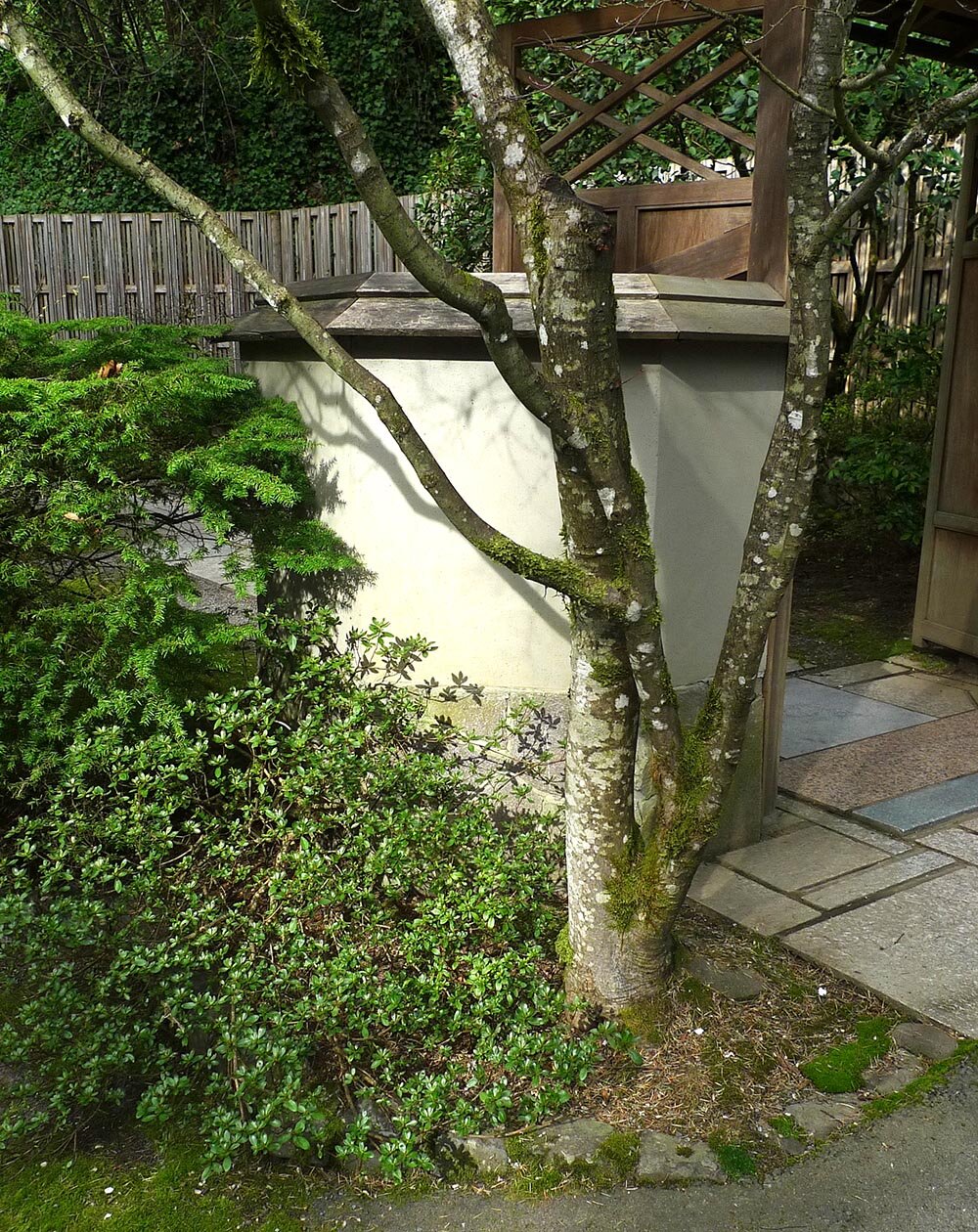In the coastal Northwest, our climate and position on the Pacific Rim give us a natural affinity with Asian design philosophy and lifestyles, which can also apply to our gardens. Japanese culture, in particular, has lent us its mastery of garden design and practices. If we delve deep enough, we will meet the concept of wabi-sabi.
Although wabi-sabi has no rigid rules, three broad principles, derived from observing nature, help define it: impermanent, incomplete, imperfect.
Nothing lasts; nothing is finished; nothing is perfect.
Sounds rather bleak at first reading! But the notion of letting go of expectations of permanence, completeness, and perfection, and appreciating what we have right now (instead of always anticipating the next thing) can be quite liberating.
Wabi-sabi is not a style that we can simply apply to our space and show off. It's more of a perspective for observing and embracing dynamic and aging objects and environments. As with many Zen-related concepts, it is rather hard to pin down for we Westerners who love definition and classification. In fact, some say that we diminish its understanding by talking about it too much.
This article, then, proves my guilt; let’s try to define it.
Wabi connotes rustic simplicity, freshness or quietness, or understated elegance.
Sabi is beauty or serenity that comes with age.
There are seven aesthetic principles often mentioned for achieving wabi-sabi:
Fukinsei: asymmetry, irregularity;
Kanso: simplicity;
Koko: basic, weathered;
Shizen: natural, without pretense (i.e., authentic);
Yugen: subtly profound grace, not obvious;
Datsuzoku: unbounded by convention, free;
Seijaku: tranquility.
The concept originates, in part, from tea masters in 16th-Century Japan reacting to the popularity of expensive, mass-produced, imported porcelain teapots and bowls. The masters advocated a preference for locally crafted dishes with their flaws and humble appearance. The more flawed and weathered, the more the dishes were revered. Gradually, the concept was applied to other entities — clothing, furnishings, the tea house itself, and eventually the garden.
Raku-style tea bowl from Kyoto, 18th-19th Century
In The Garden
In the garden, wabi-sabi might emerge through a gnarly old, moss-covered tree, a lichen-encrusted rockery, a weathered wood fence, a well-oxidized metal gate, groundcover plants which have slightly escaped. Borders may be fuzzy; lines aren't necessarily straight. But it's not merely old, weathered or imperfect. It's not a shabby, weedy look relabeled as "quaint."
It's more the idea that such elements have earned their place in the garden, aged in their own time. Plantings that are allowed to grow and age naturally, with minimal human interference. Sometimes that old fence or tree inspires us by how it has withstood years of adversity to still perform its function, and still exude beauty.
The garden does not necessarily need to appear overtly Japanese or Asian to evoke wabi-sabi. There are many great examples around the world that show the honest character of their locale. Vine-covered stone walls in Ireland, herbs tumbling out of window boxes in Italy, adobe courtyards in New Mexico. There are ethereal Northwest gardens of fern and moss and stone and wood. These evoke and honor the ancient heritage of their place.
Neither is it all about beauty and symbolism. Wabi-sabi has a practical side. For example, garden elements allowed to weather naturally tend to be lower maintenance than manufactured, modern elements. The wabi-sabi garden weathers with grace.
The landscape tends to grow in value as it ages. It is generally more reconciled to the processes of weathering and aging (and movements of the earth) than architecture or other manmade structures (which are typically designed to protect us from nature). At least, we would hope the elements we incorporate into our landscape age well, rather than demand high maintenance.
How often do we think and talk about the design lifespan or shelf life in our garden? It's hard to resist the instant gratification, the latest trends, and instinct to calculate the resale value of our property. It takes forethought and discipline to plan a garden which is likely to outlive us.
Are we prepared to accept the inevitable future cracks in our poured concrete walkway? If our stained wood and stucco structures look fabulous when installed, but need major cleaning or repair every few years to keep that "new" look, what does that say about our respect for aging? Some structures and treatments are not intended to last a long time, but we should consider the future of the ones that are.
So perhaps we can learn to savor our garden when it's "too green" in the summer (but notice all the variations of green!) or “too brown” in winter (but how it catches the winter light!). We can relax with perennials slowly going to seed, occasional nibbling by wildlife, ceramic pots showing little cracks and blemishes, moss and lichen creeping across the edge of the pavers.
Nothing lasts; nothing is finished; nothing is perfect.
No, this is not for everyone. Some of us want a modern look, exuberant color, stunning details that shout, “Life Is A Party!!!” Humbleness and longevity are less priority. There’s nothing wrong with choosing that approach for your garden.
Wabi-sabi is simply a means to garden and live with perhaps a bit less volume and a bit more grace.









